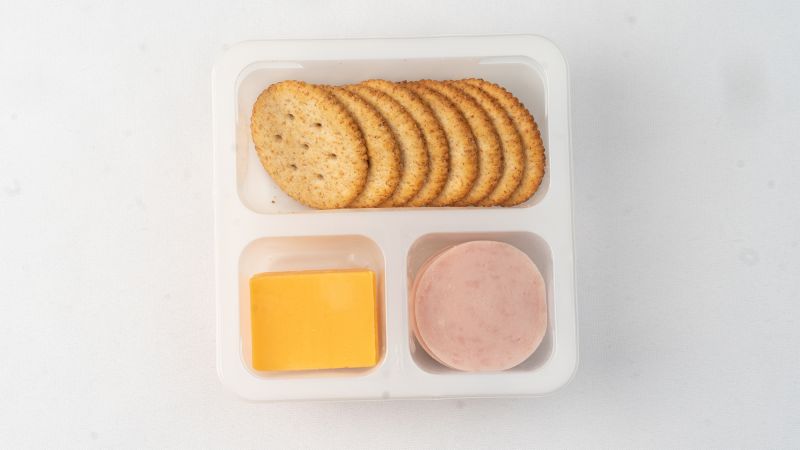Consumer Reports issued a warning about the high levels of sodium found in school cafeteria versions of popular kids’ snack kit, Lunchables. Two new versions of Lunchables were made available as part of school lunch programs last year, with sodium levels higher than the store-bought versions. The turkey and cheddar school versions contained 930 mg of sodium compared to 740 mg in the store-bought version. Additionally, lead, cadmium, and high levels of sodium were found in other lunch kits tested by Consumer Reports.
Lead and cadmium, found in Lunchables and other lunch kits, can cause health issues over time, with even small amounts leading to developmental problems in children. Phthalate chemicals were also detected in most kits tested, with harmful effects on children’s health. Consumer Reports has petitioned the US Department of Agriculture to remove Lunchables from school cafeterias due to these health concerns. There is particular concern over the impact of these chemicals on children’s health, as they can accumulate in the body and lead to long-term health issues.
Lunchables, manufactured by Kraft Heinz, entered K-12 school lunchrooms through the National School Lunch Program (NSLP) for the first time last year. The company had to reformulate the ingredients to meet federal guidelines, including reducing saturated fat and sodium levels. Kraft Heinz stated that the Lunchables options for schools contain more protein and whole grains, reduced sodium and saturated fat, and increased serving sizes. However, the sodium levels in the school versions still exceeded those in the store-bought kits.
The introduction of Lunchables into schools coincided with proposed changes to school food guidelines by the USDA, aiming to reduce added sugars and sodium levels in school lunches gradually. The USDA emphasized its commitment to ensuring high nutritional quality in school meals but noted that individual food items are not allowed or disallowed. Kraft Heinz has taken steps to improve the nutrition profile of Lunchables, such as reducing sodium content in crackers and introducing Lunchables with fresh fruit.
Consumer Reports highlighted concerning additives in Lunchables, indicating that these ingredients are indicators of ultraprocessed foods. Additives are used to enhance flavor and extend shelf life, and they can include preservatives, emulsifiers, artificial colorings, and added sugars, salt, and fats. While food additives are generally recognized as safe by the FDA, there are concerns raised by watchdog groups about their impact on health. Ingredients listed on the Kraft-Heinz website for Lunchables include potentially harmful chemicals like TBHQ and sodium diacetate.
The presence of additives in Lunchables and other processed foods raises concerns about the impact on children’s health, with potential links to developmental issues, cancer, and other diseases. Consumer Reports’ call for the removal of Lunchables from school cafeterias reflects the growing awareness of the health risks associated with certain food products. As the debate over food additives and their effects continues, there is a need for greater transparency and regulation to protect consumers, especially children, from potentially harmful chemicals in their food.


